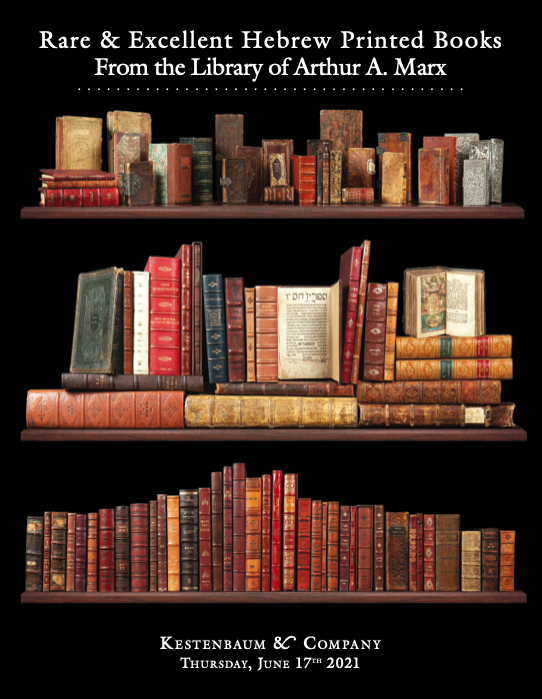<<RaMBa’M).>> Moreh Nevuchim [“Guide for the Perplexed”]. <<* With:>> Moses Provencal. Biur Inyan Shnei Kavim [dissertation on the Theorem of Apollonius].

Auction 94 |
Thursday, June 17th,
2021 at 11:00am
Rare & Excellent Hebrew Printed Books: From the Library of Arthur A. Marx
Lot 372
MOSHE BEN MAIMON (MAIMONIDES /
<<RaMBa’M).>> Moreh Nevuchim [“Guide for the Perplexed”]. <<* With:>> Moses Provencal. Biur Inyan Shnei Kavim [dissertation on the Theorem of Apollonius].
Sabbioneta: Cornelio Adelkind for Tobias Foa 1553
Est: $3,000 - $5,000
PRICE REALIZED $2,000
Undoubtedly the most celebrated philosophical text in all of Jewish literature. A work that earned Maimonides his worldwide rabbinic acclaim and the affectionate moniker HaNesher HaGadol (’The Great Eagle’).
The Guide to the Perplexed, the final work by Maimonides, was completed in 1185 or 1190. It had a troubled history, sparking centuries of Maimonidean controversies. Heavily influenced as it was by Greek - specifically Aristotelian philosophy - the work was thought by some to conflict with Judaic tradition. Tragically - and obviously due to other motivations - the work was publicly burned by the Dominicans in Paris in 1232.
Provencal’s dissertation and commentary on the Theorem of Apollonius concerning two straight lines that never meet was translated into Italian in 1550 and from Italian into Latin in 1586. See C. Roth, Jews in the Renaissance (1959) pp. 28-9, 236, 266.
